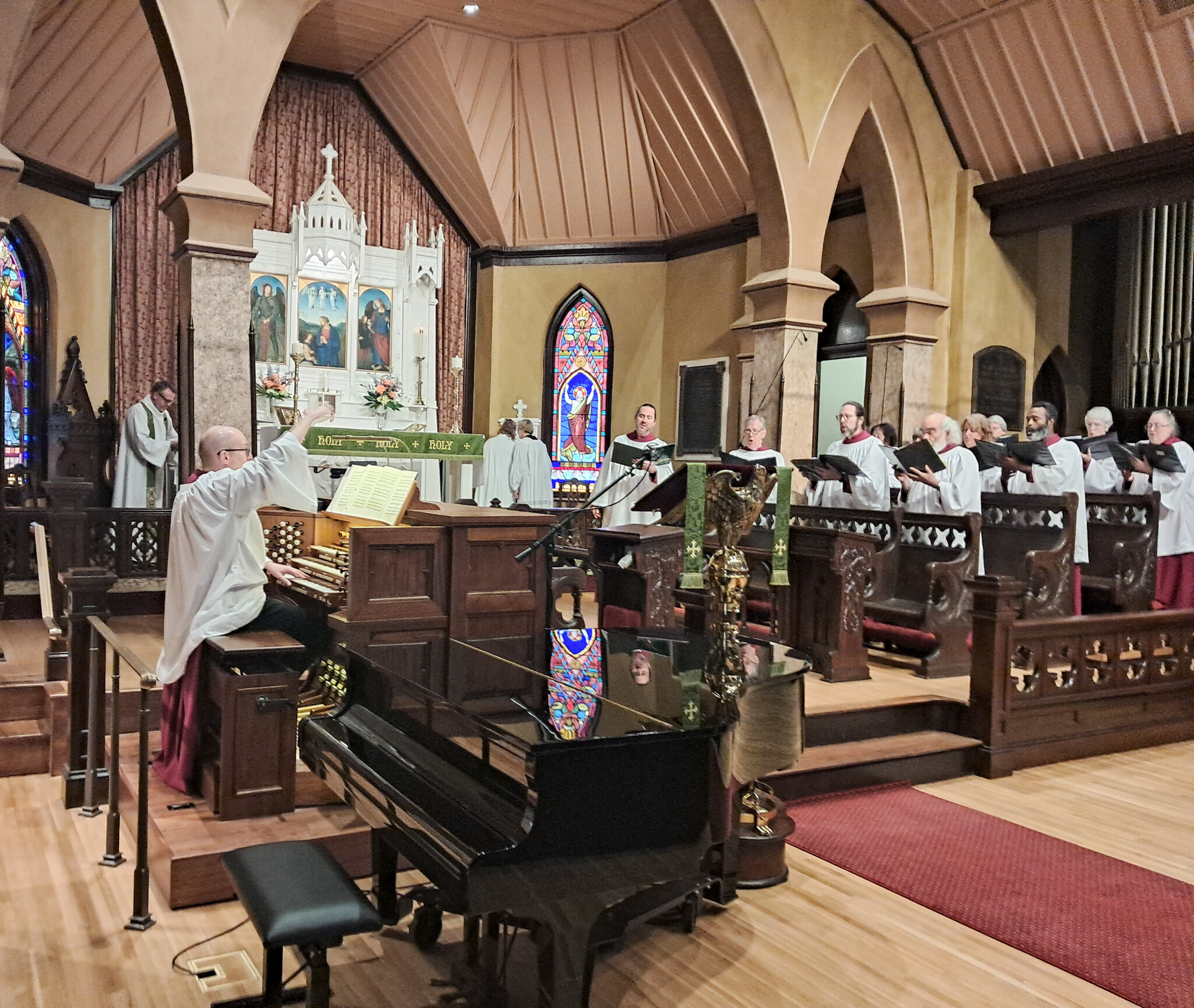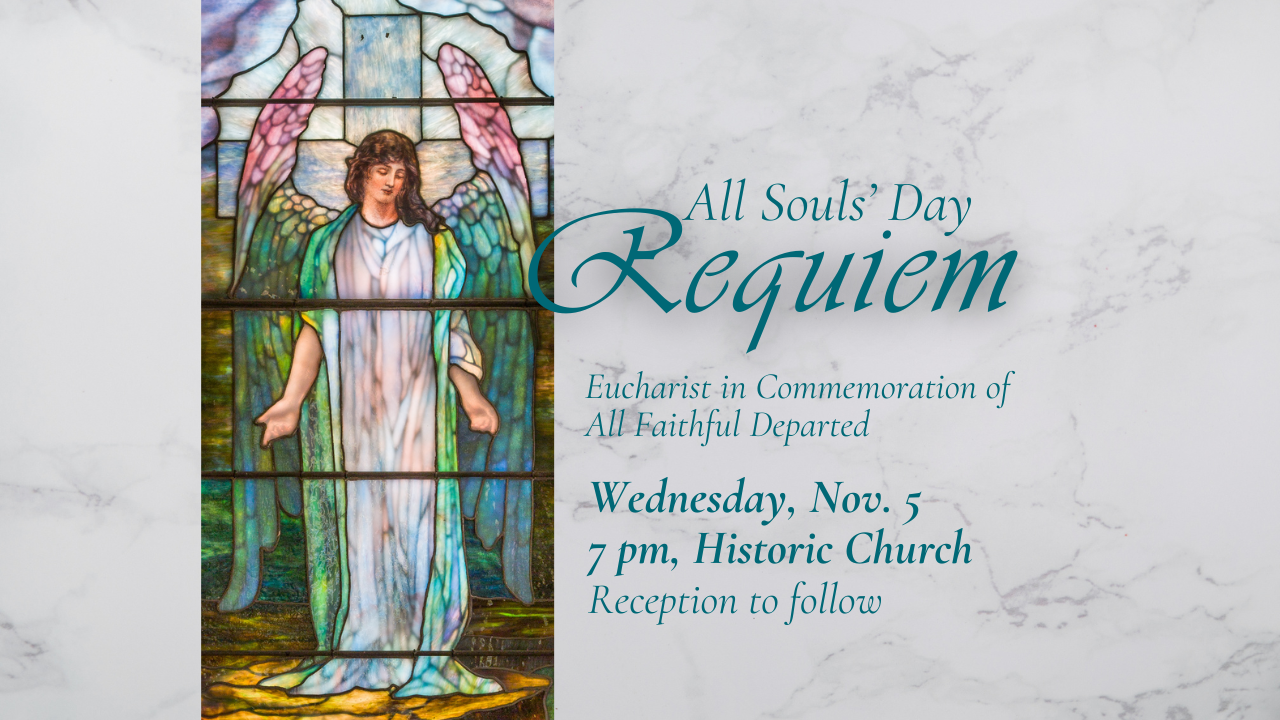
The concern with the Last Things that was introduced in last Sunday’s lessons continues this week with words of warning and hope in the Gospel, and a great promise of peace and renewal from Isaiah.
Prompted by some comments from the crowd about the beauty of the Temple in Jerusalem, Our Lord warns, essentially, not to put our trust in such splendor and seeming solidity, for in the course of human and natural events, even such monumental structures will not last for ever and will not inevitably afford protection. Rather, those who follow Christ will face persecution and betrayal, and only their own Christ-inspired endurance will prevail. Our Sequence hymn, ‘If thou but trust in God to guide thee’ (‘Wer nur den lieben Gott läßt walten’ [635]), assures the faithful singer-listener of God’s strength, love, and presence: an immovable foundation. A fine example of the hymnody that grew out of the devastation of the Thirty Years’ War – nations indeed rising against nation – in the early seventeenth century, both words and music were written by Georg Neumark, a poet and civil servant; the translation, as with so many other classic German hymns, is the work of Catherine Winkworth, who also worked to promote girls’ and women’s education in Victorian England. Our closing hymn, ‘All my hope on God is founded’ (‘Meine Hoffnung stehet feste’ [665]), reminds us that ‘though with care and toil we build them, / tower and temple turn to dust. / But God’s power, / hour by hour, / is my temple and my tower.’
‘Urbs Jerusalem beata’ is traditionally appointed for the observance of the Anniversary of the Dedication of a Church (an occasion for which both Mass and Office are provided in the Book of Common Prayer; see p. 929 and 1000 in that Book, as well as Hymn 289, which we sang recently). The first half is found translated at Hymn 519 (‘Blessed city, heavenly Salem’) with its proper melody, the second half at 518 (‘Christ is made the sure foundation’) with music from an anthem by Henry Purcell. For this Sunday’s Communion anthem I have updated the ninteenth-century translation of the first half and made a simple setting of the fine melody in a metrical interpretation which some scholars believe was typical of early chant. ‘Urbs beata’, inspired by Revelation 21, I Peter 2, and Ephesians 2, connects the heavenly or new Jerusalem with the local, physical church building and the Church itself, via the metaphor of the Church’s members as ‘living stones’ and Christ as the ‘cornerstone’. It furthermore connects the earthly members of the Church with the denizens of heaven, the saint-stones who were shaped (in the metaphorical language of the hymn, hammered or beaten, chiselled, and ground down or polished) for their place by the travails which they endured for the sake of Christ: precisely the kinds of experiences which Our Lord describes in the Gospel.
In Isaiah 65, as in Revelation 21, we are given a picture of life beyond such trials: new heavens and a new earth; life long enough, and with peace enough, to enjoy the fruits of one’s labor; wild beasts tamed and the serpent suppressed. This vision informs both our Offertory anthem and Communion hymn. The former, set to a traditional American tune in a very strong arrangement by prolific twentieth-century composer and conductor Alice Parker, is adapted from a hymn by John Leland, an early (1754–1841) American Baptist minister who was an advocate for religious liberty and an outspoken abolitionist. ‘The Christian’s Consolation’, published around 1801, imagines God’s grace and goodness ‘running free / from my Father’s glorious throne, / sweeter than the honey comb... running like a stream / from the New Jerusalem’. Our Communion hymn, ‘Jerusalem, my happy home’ [620], comes from an English song of 27 stanzas dating from around 1600. The original begins with the present first stanza, then more or less alternates descriptions of the woes of earthly life and the glories of heaven – in the midst of which is found our second stanza – before arriving at our third and fourth stanzas depicting King David as choirmaster and Our Lady singing the Magnificat, her canticle of praise. The inspired pairing with ‘Land of Rest’, another American folk tune with a placid, even pastoral, atmosphere, heightens the portrayal of eternal bliss for which we long.




Login To Leave Comment